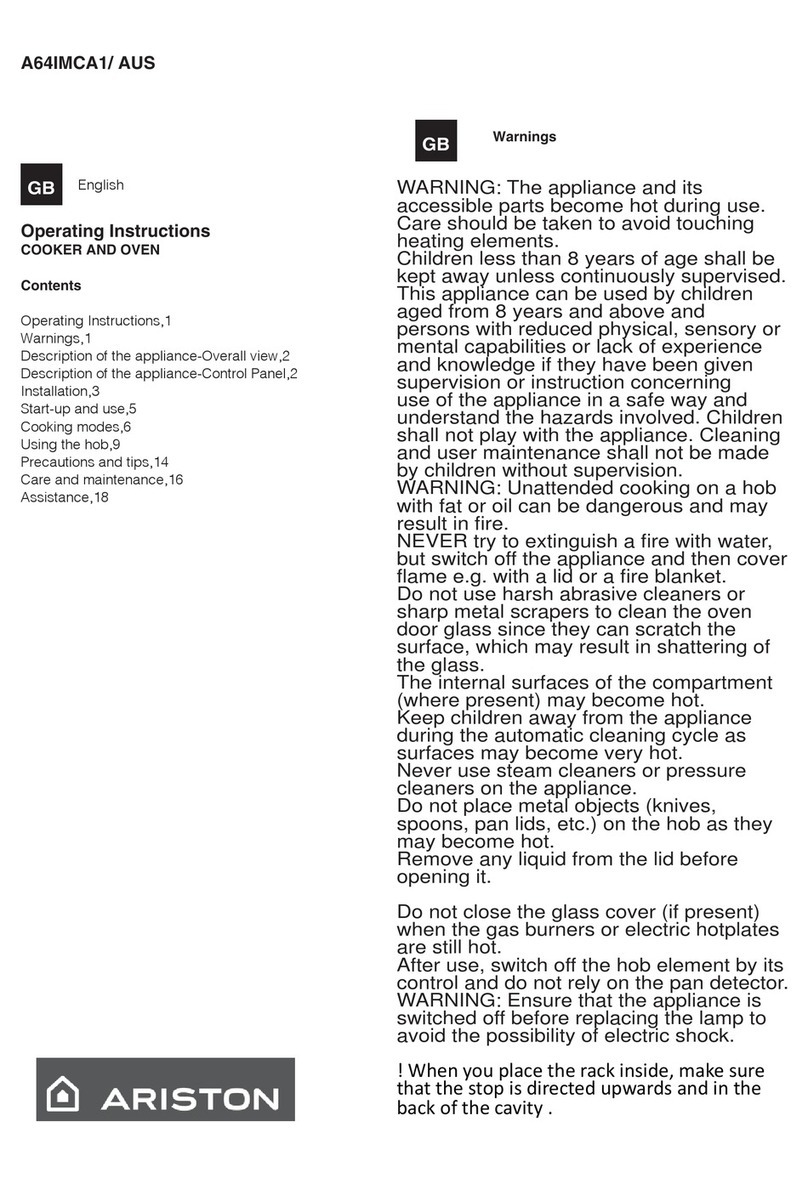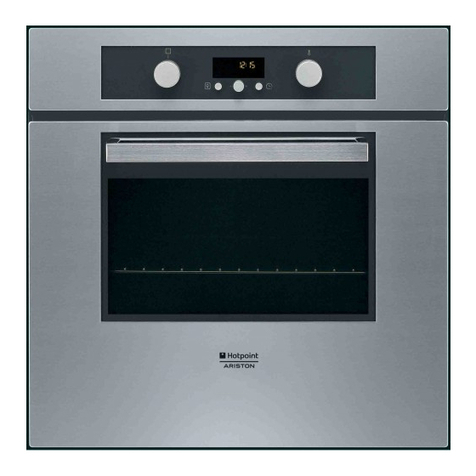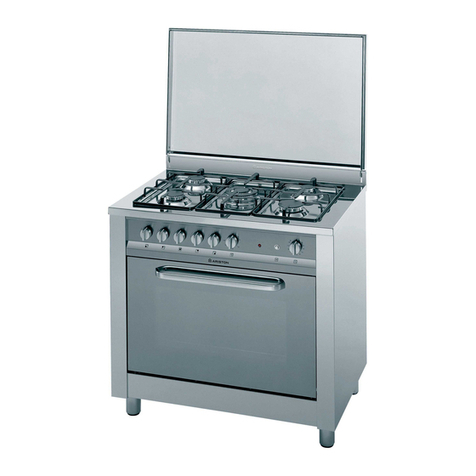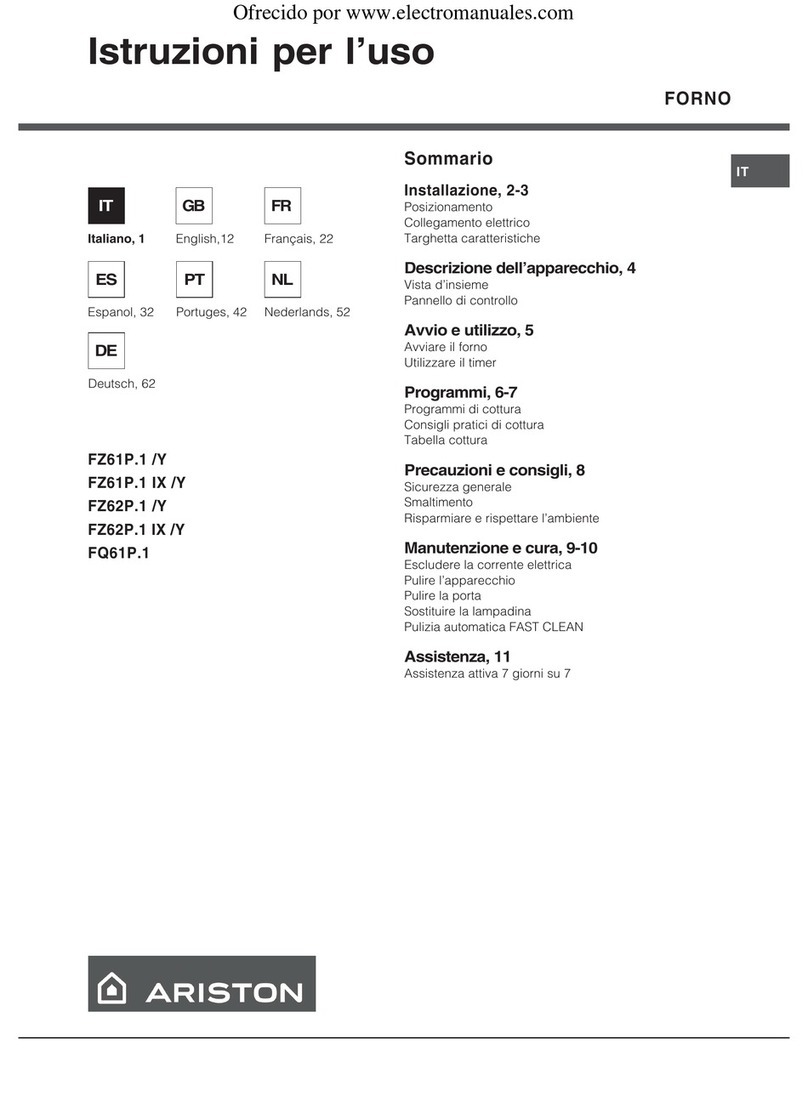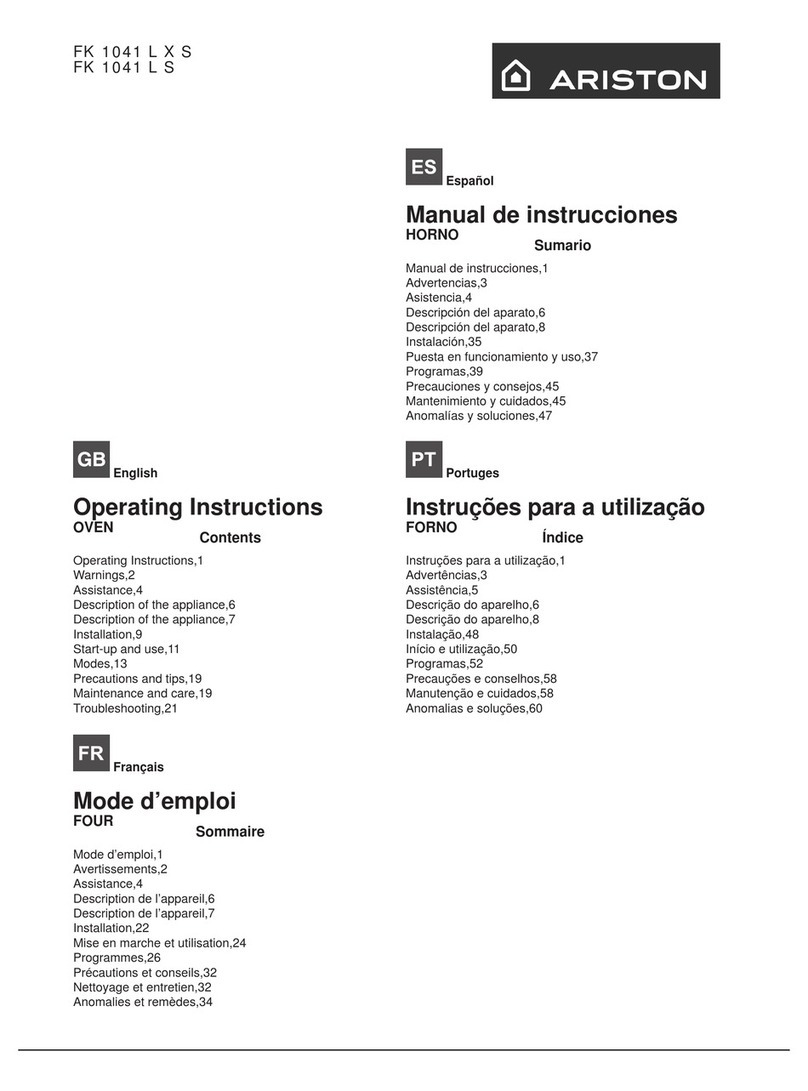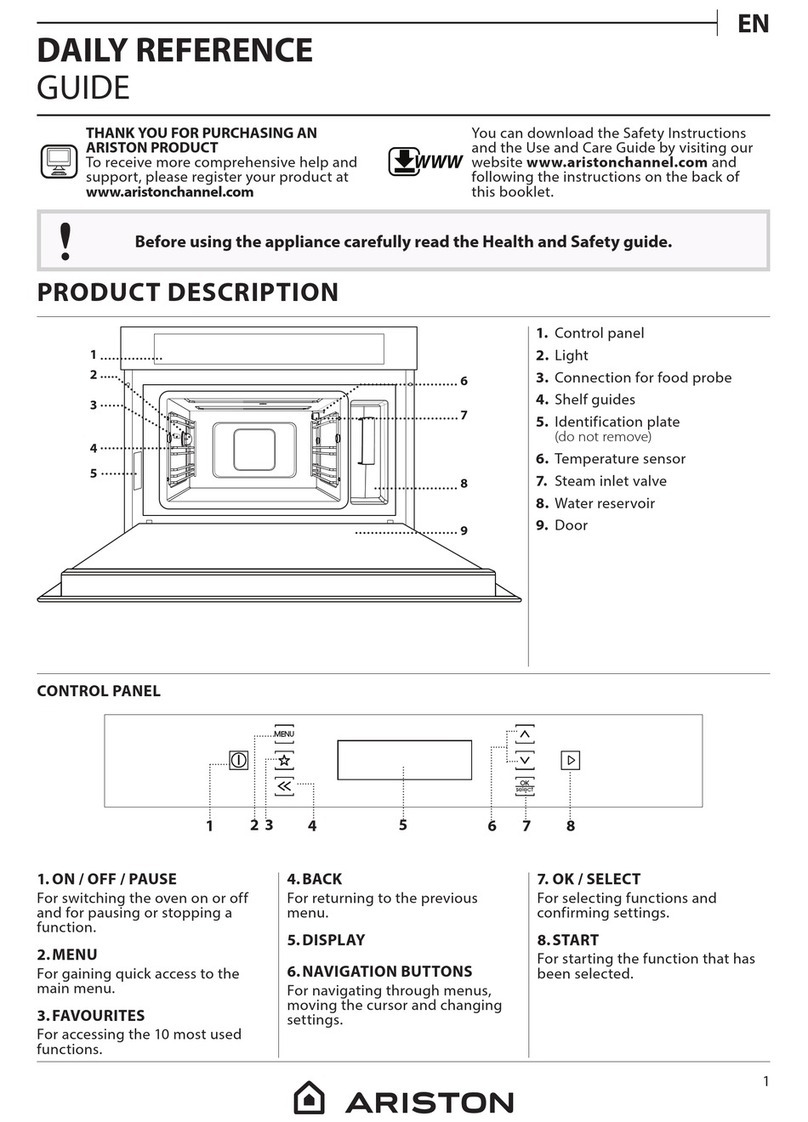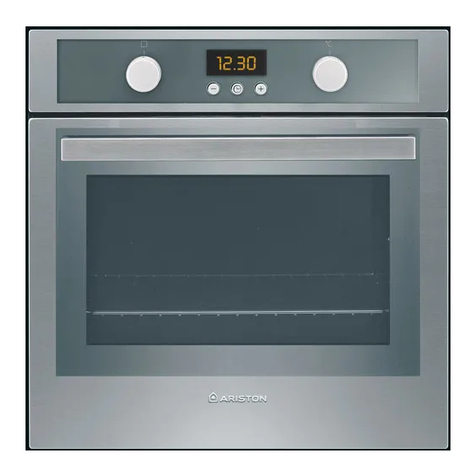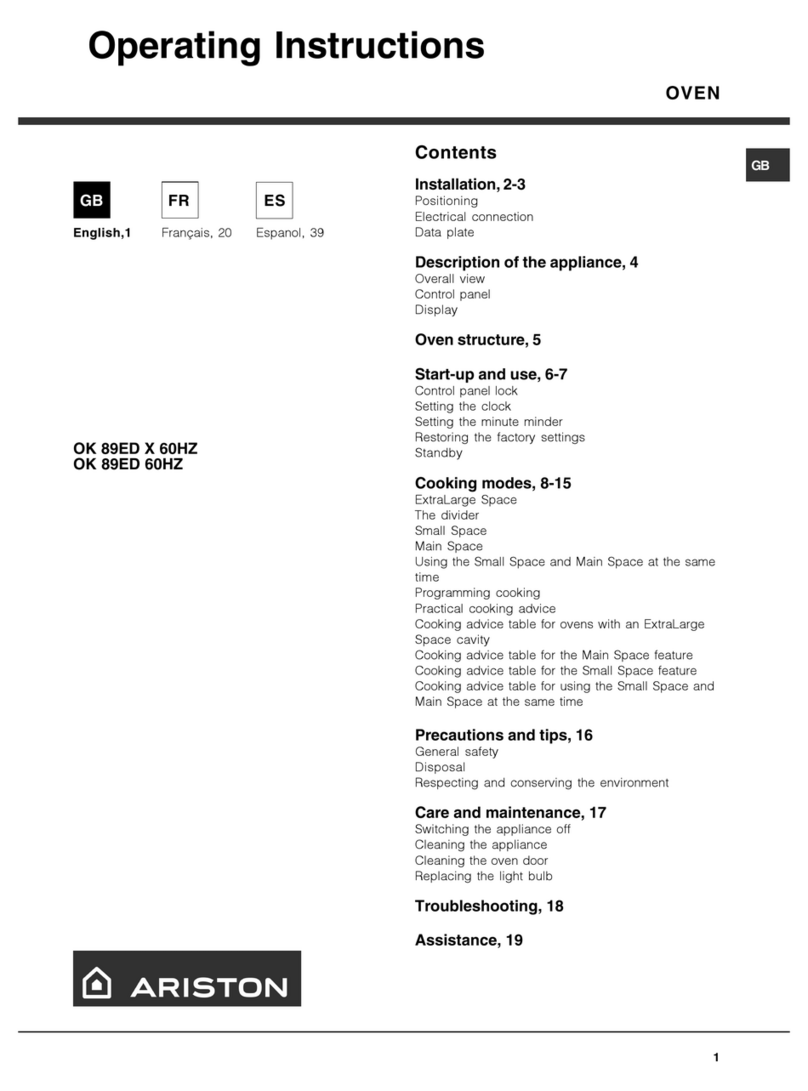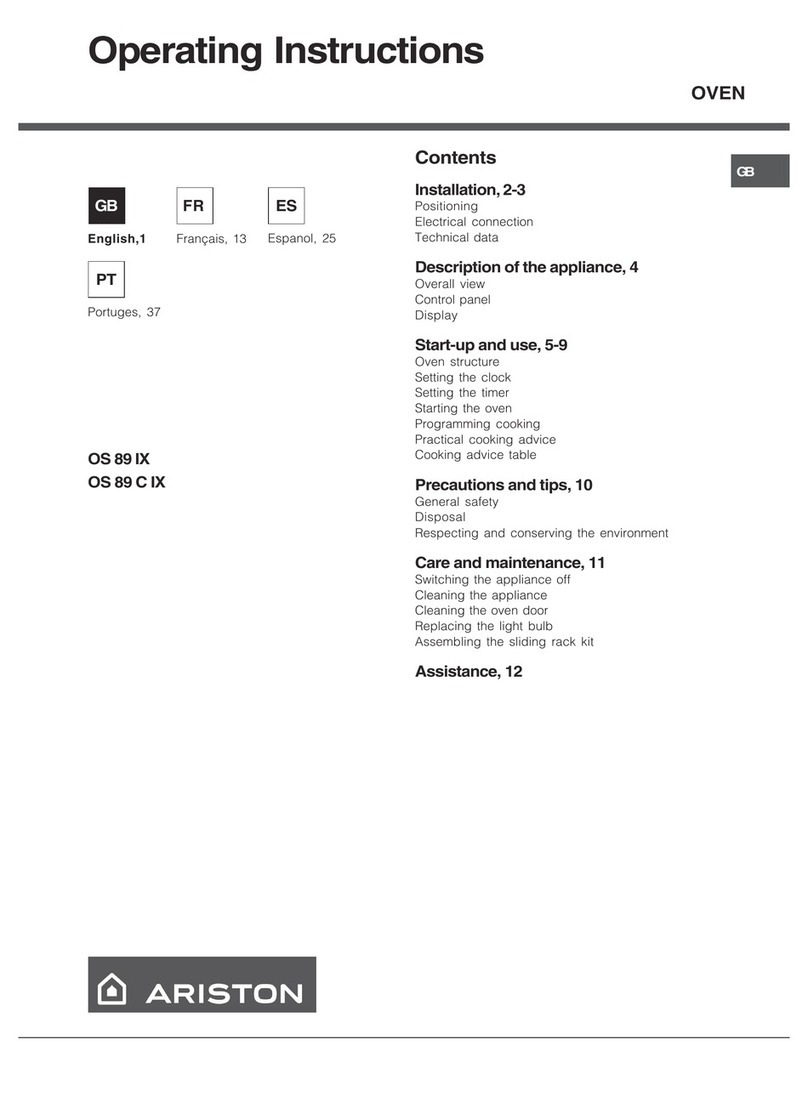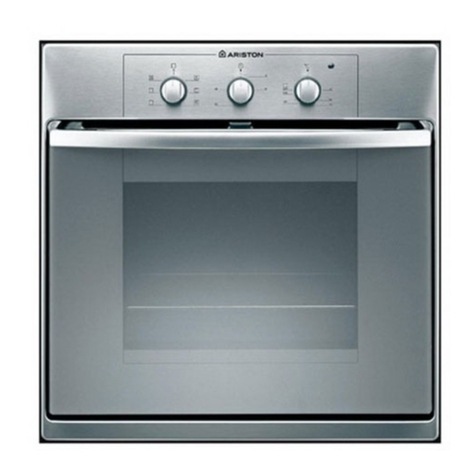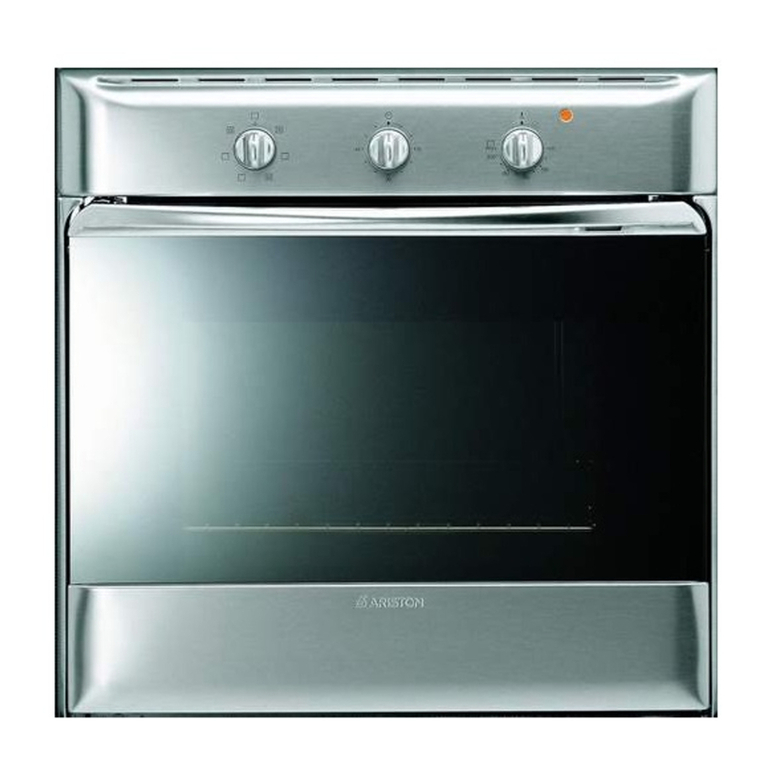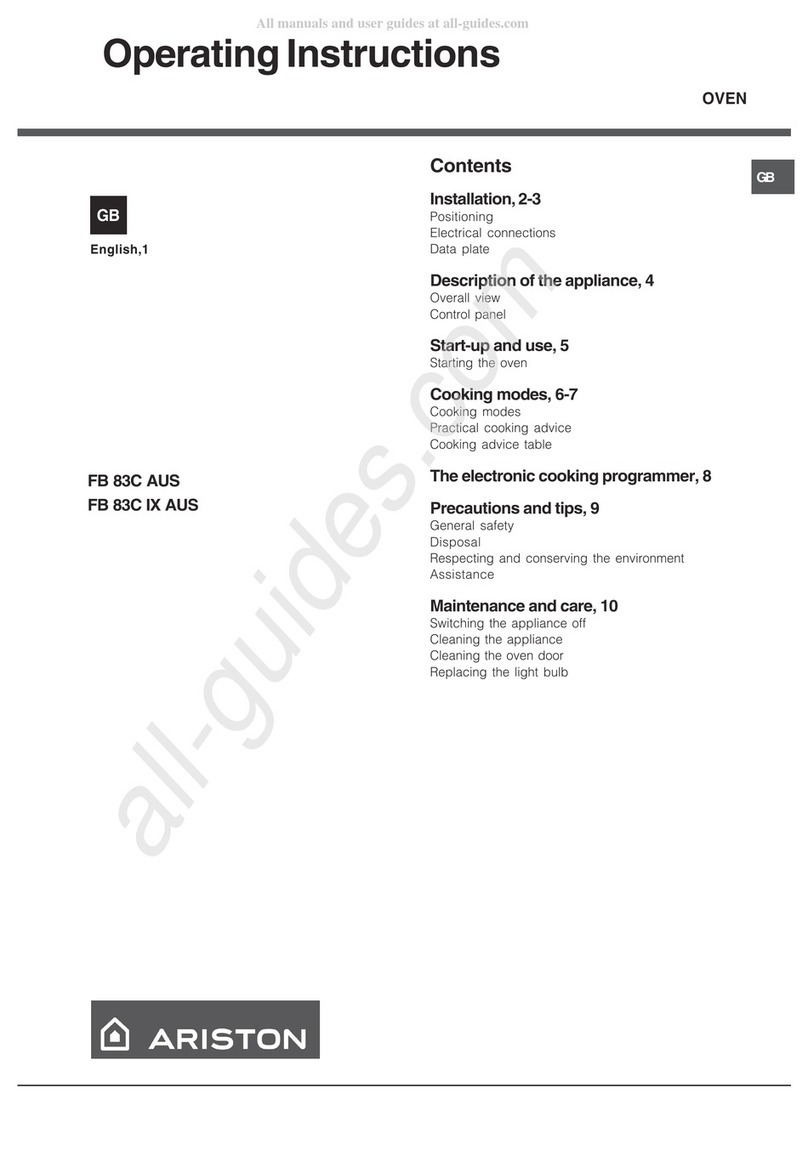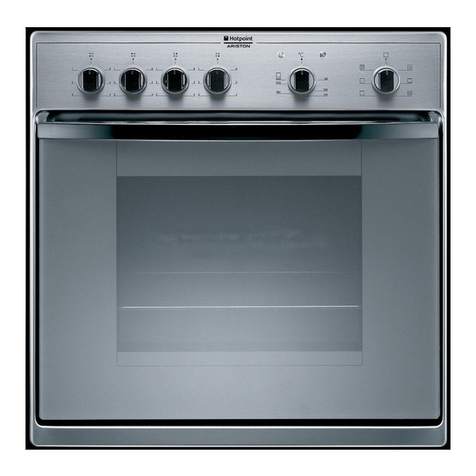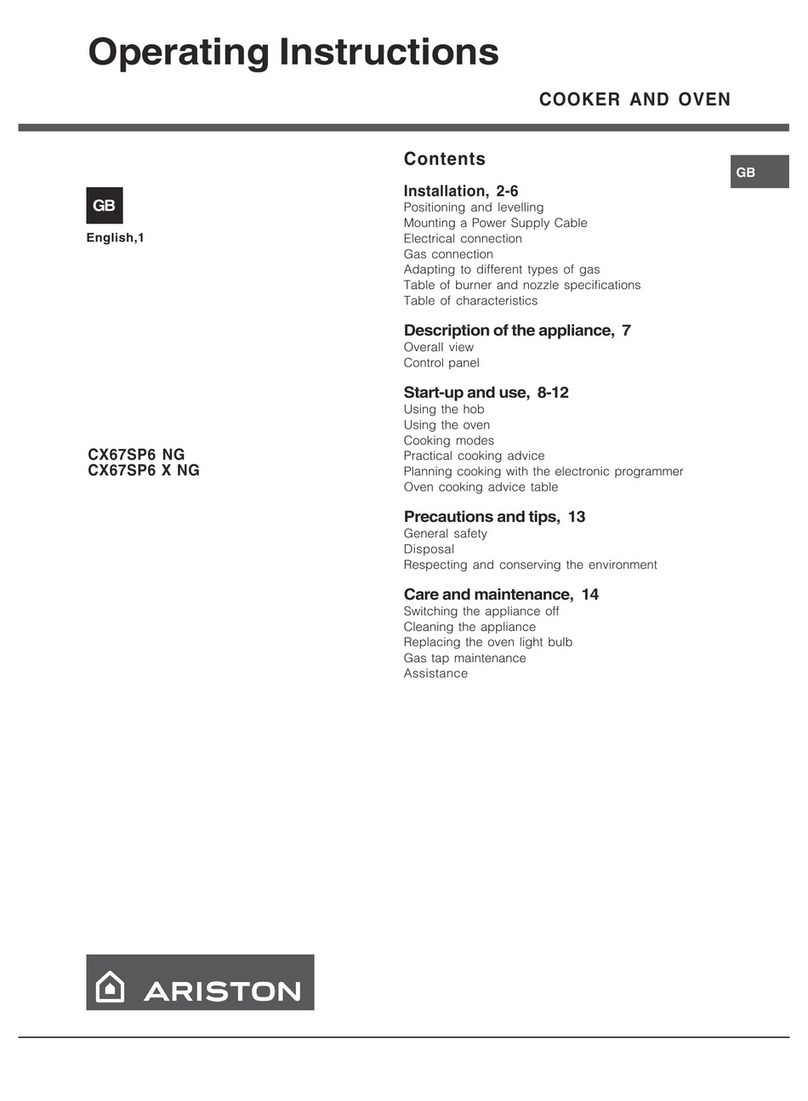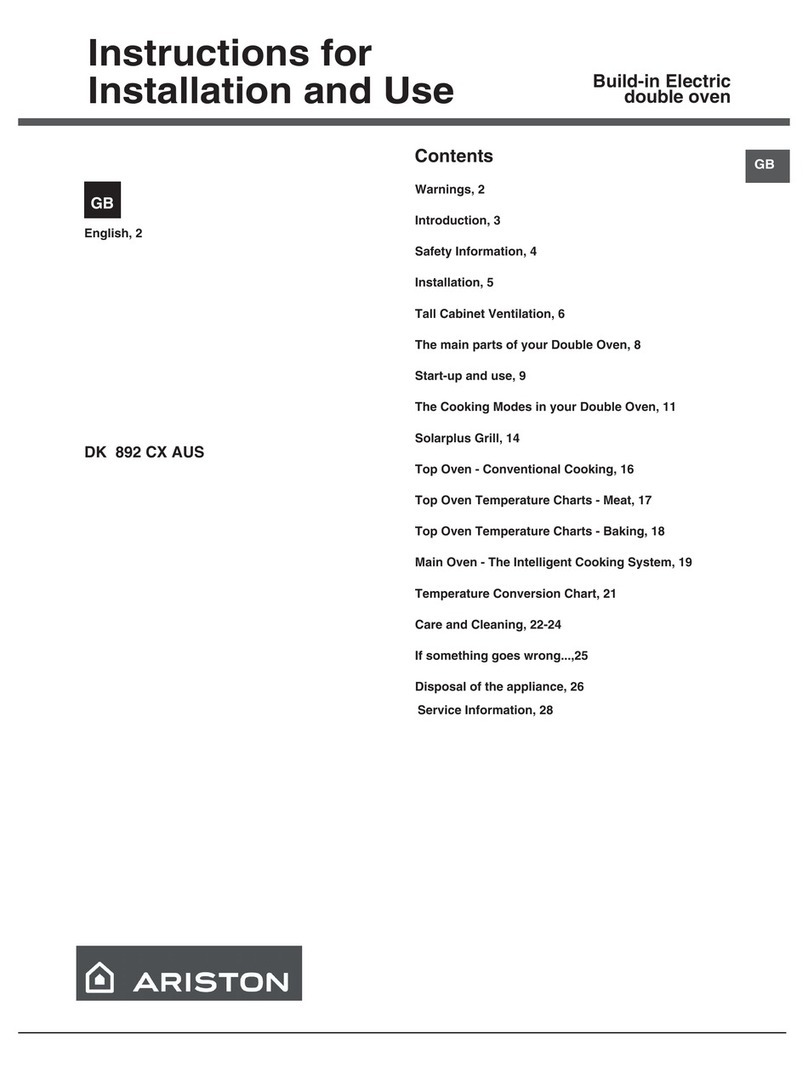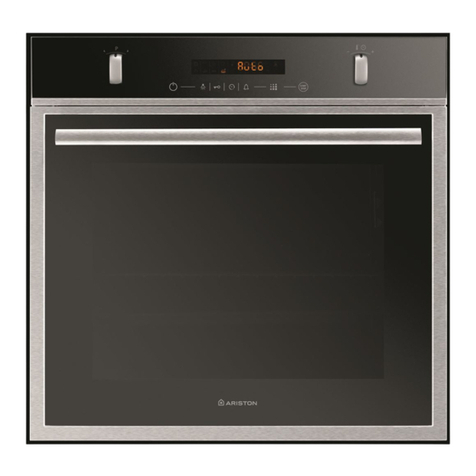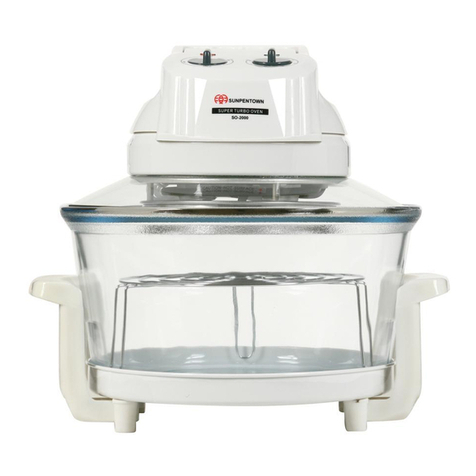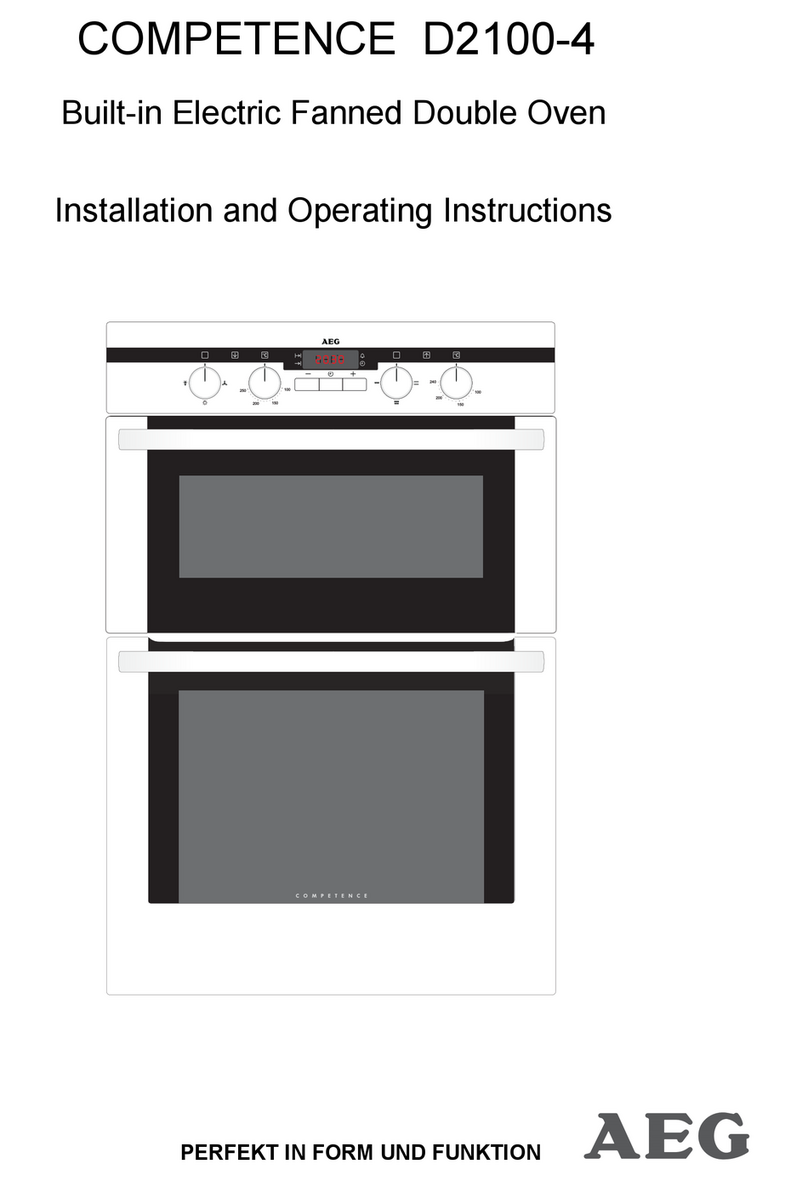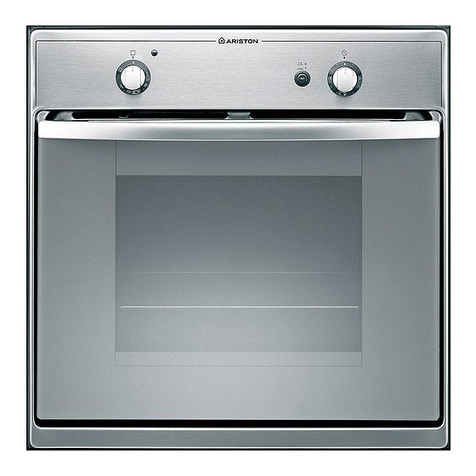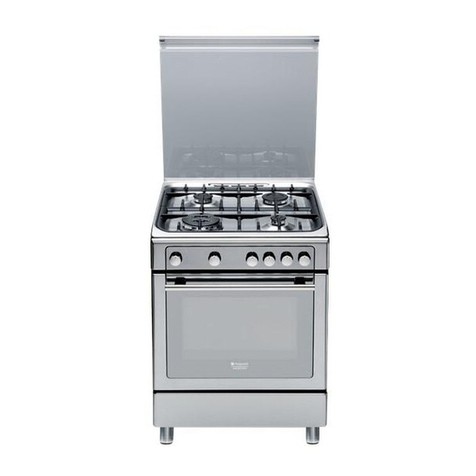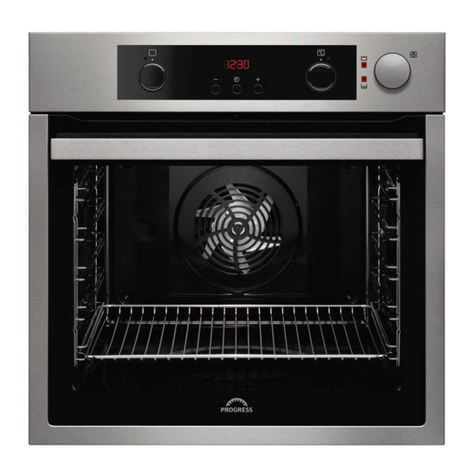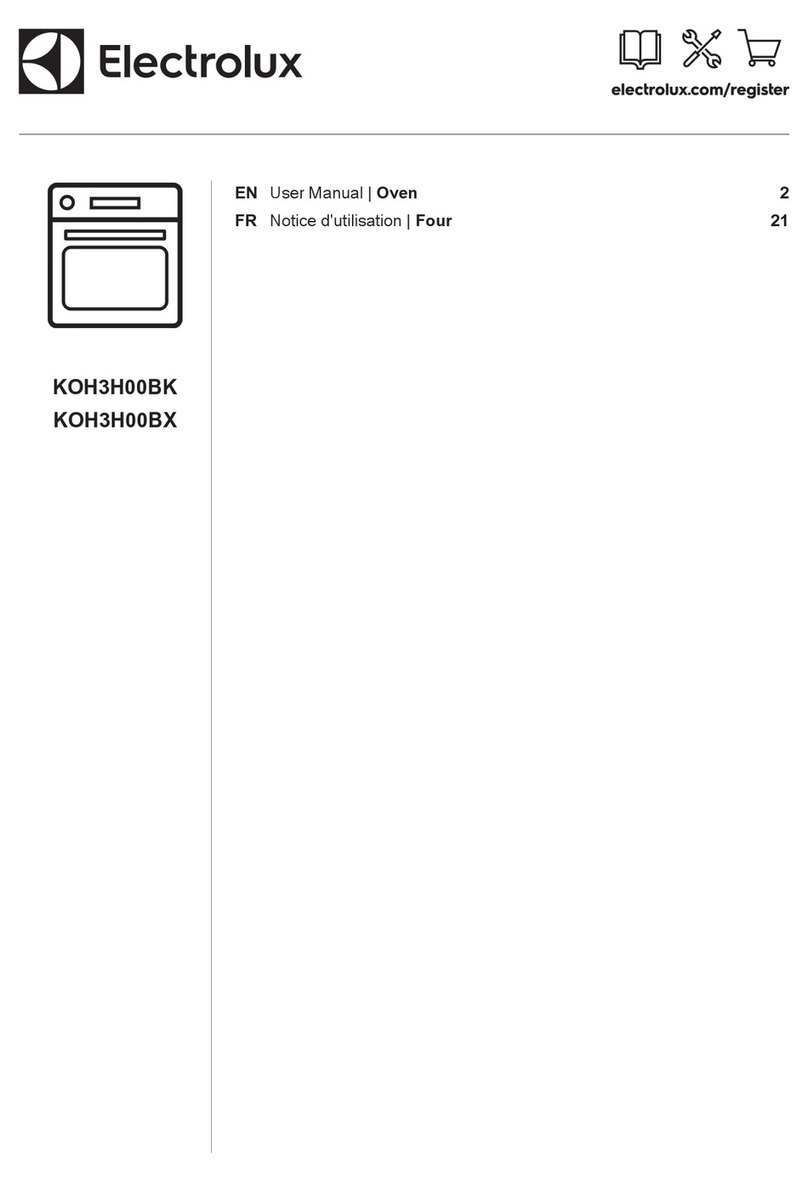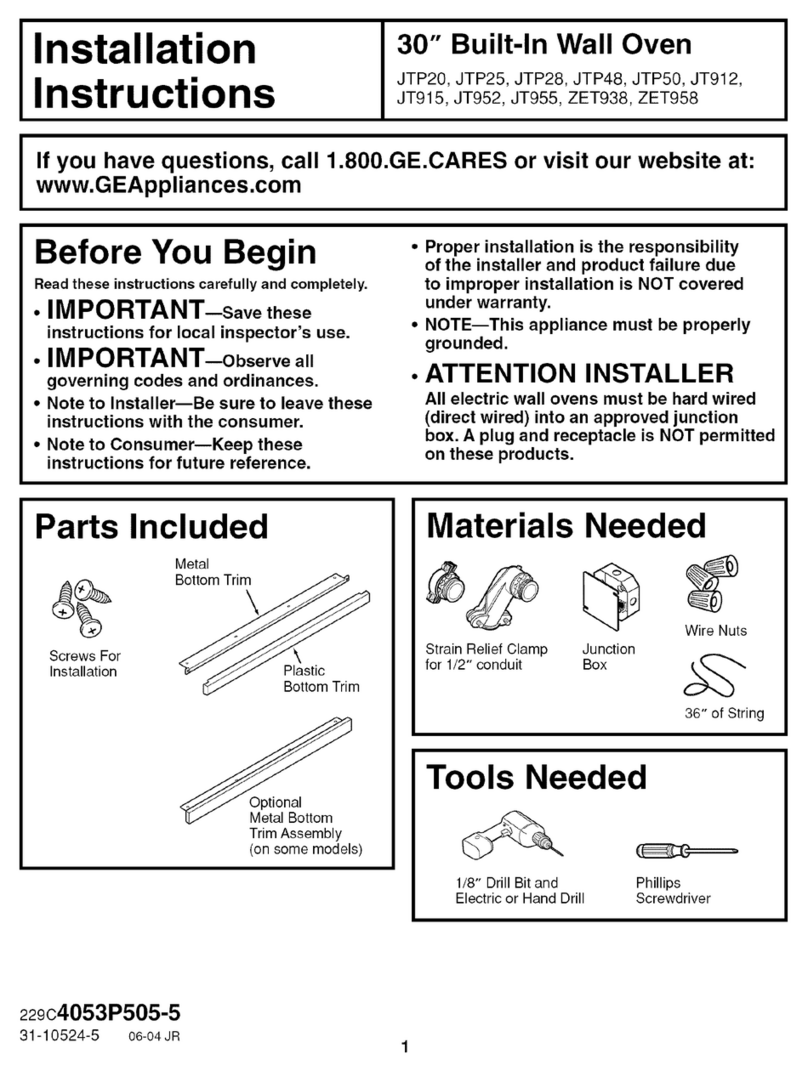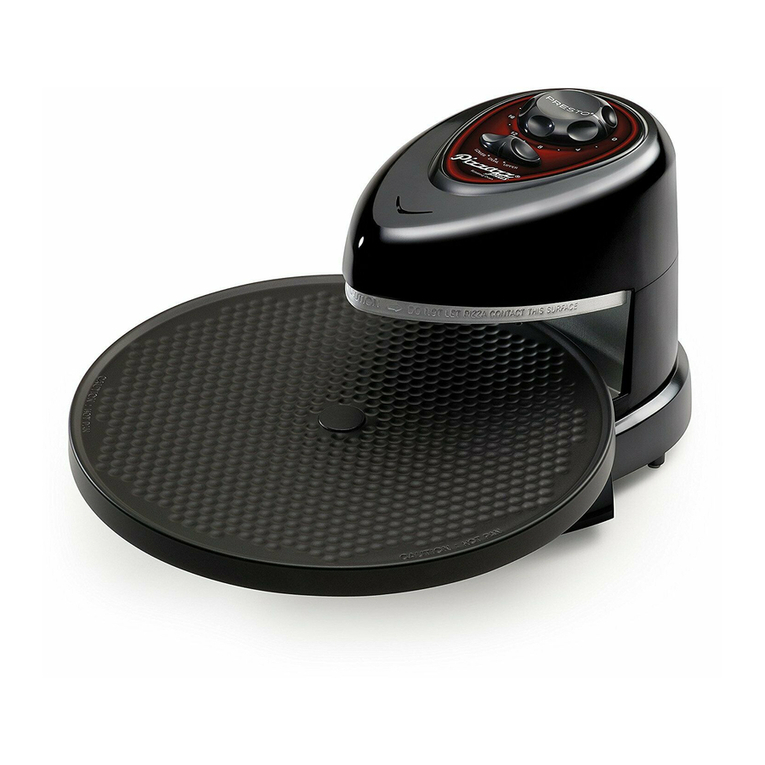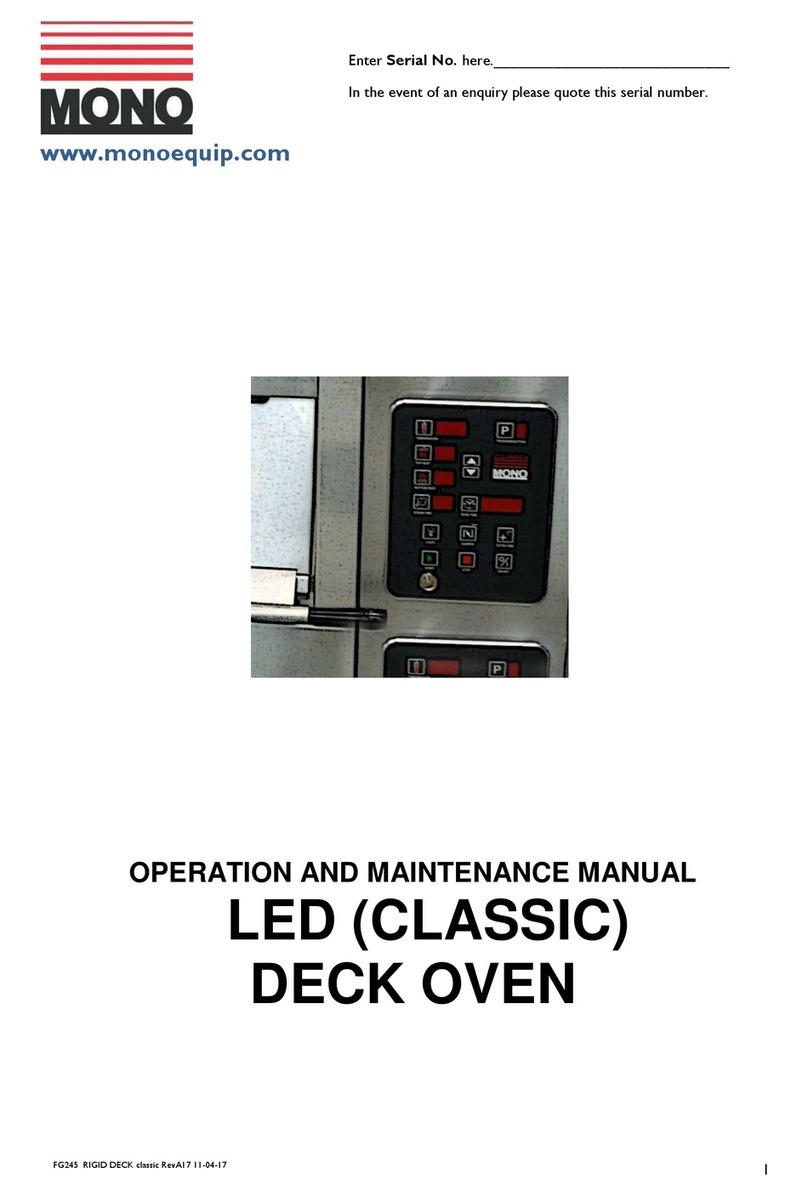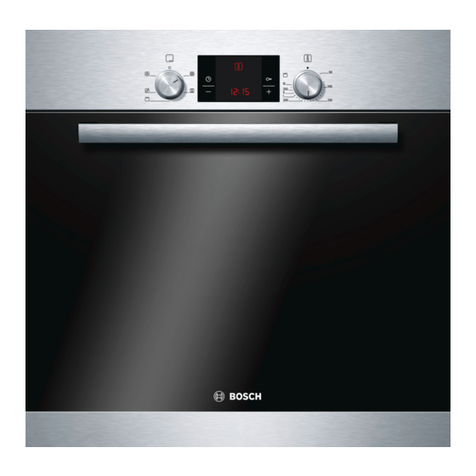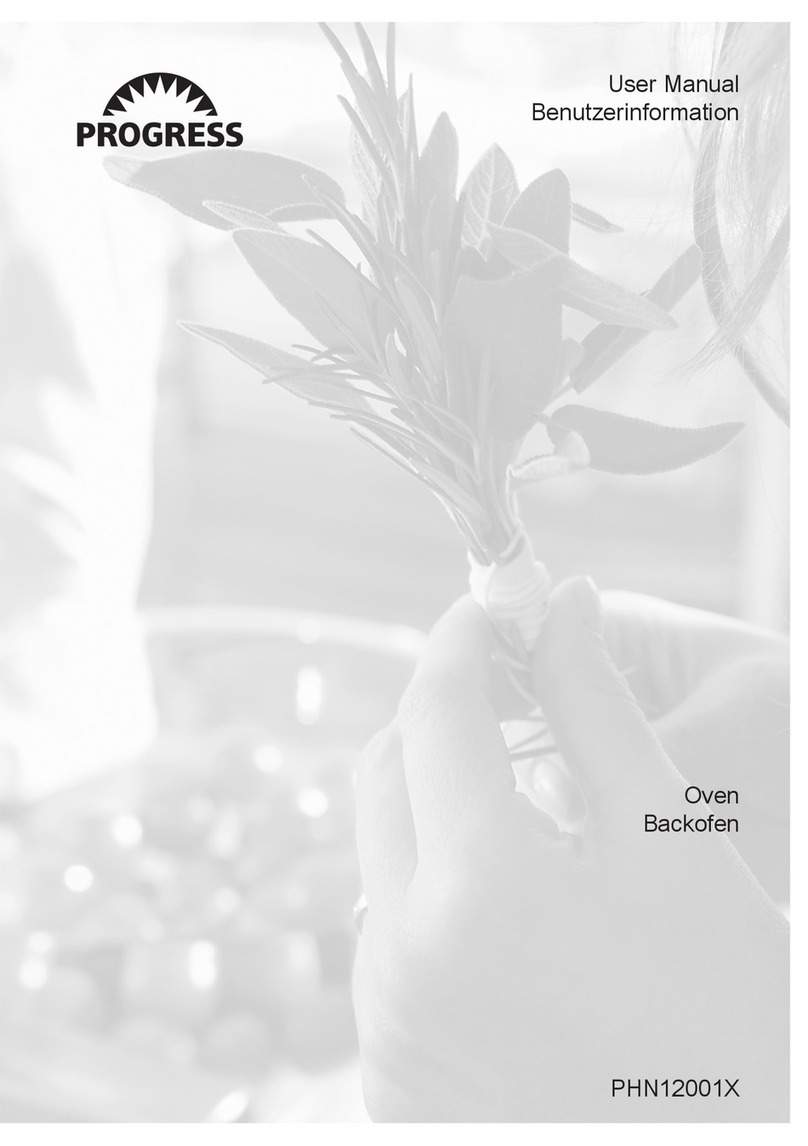11
GB
Precautions and tips
This appliance has been designed and anufactured
in co pliance with international safety standards.
The following warnings are provided for safety
reasons and ust be read carefully.
General safety
The appliance was designed for do estic use
inside the ho e and is not intended for co ercial
or industrial use.
The appliance ust not be installed outdoors, even
in covered areas. It is extre ely dangerous to leave
the appliance exposed to rain and stor s.
Do not touch the appliance with bare feet or with
wet or da p hands and feet.
The appliance ust be used by adults only for the
preparation of food, in accordance with the
instructions provided in this booklet.
The instruction booklet acco panies a class 1
(insulated) or class 2 - subclass 1 (recessed
between 2 cupboards) appliance.
Do not touch the heating elements or certain
parts of the oven door when the appliance is in
use; these parts become extremely hot. Keep
children well away from the appliance.
Make sure that the power supply cables of other
electrical appliances do not co e into contact with
the hot parts of the oven.
The openings used for the ventilation and
dispersion of heat ust never be covered.
Always use oven gloves when placing cookware in
the oven or when re oving it.
Do not use fla able liquids (alcohol, petrol, etc...)
near the appliance while it is in use.
Do not place fla able aterial in the lower
storage co part ent or in the oven itself. if the
appliance is switched on accidentally, they could
catch fire.
The internal surfaces of the co part ent (where
present) ay beco e hot.
Always ake sure the knobs are in the position
when the appliance is not in use.
When unplugging the appliance, always pull the
plug fro the ains socket; do not pull on the
cable.
Never perfor any cleaning or aintenance work
without having disconnected the appliance fro the
electricity ains.
If the appliance breaks down, under no
circu stances should you atte pt to perfor the
repairs yourself. Repairs carried out by
inexperienced persons ay cause injury or further
alfunctioning of the appliance. Contact
Assistance.
Do not rest heavy objects on the open oven door.
Disposal
When disposing of packaging aterial: observe
local legislation so that the packaging ay be
reused.
The European Directive 2002/96/EC relating to
Waste Electrical and Electronic Equip ent (WEEE)
states that household appliances should not be
disposed of using the nor al solid urban waste
cycle. Exhausted appliances should be collected
separately in order to opti ise the cost of re-using
and recycling the aterials inside the achine,
while preventing potential da age to the
at osphere and to public health. The crossed-out
dustbin is arked on all products to re ind the
owner of their obligations regarding separated
waste collection.
For further infor ation relating to the correct
disposal of exhausted household appliances,
owners ay contact the public service provided or
their local dealer.
Respecting and conserving the
environment
You can help to reduce the peak load of the
electricity supply network co panies by using the
oven in the hours between late afternoon and the
early hours of the orning.
Always keep the oven door closed when using the
GRILL and GRATIN odes: This will achieve
i proved results while saving energy
(approxi ately 10%).
Check the door seals regularly and wipe the clean
to ensure they are free of debris so that they adhere
properly to the door, thus avoiding heat dispersion.












